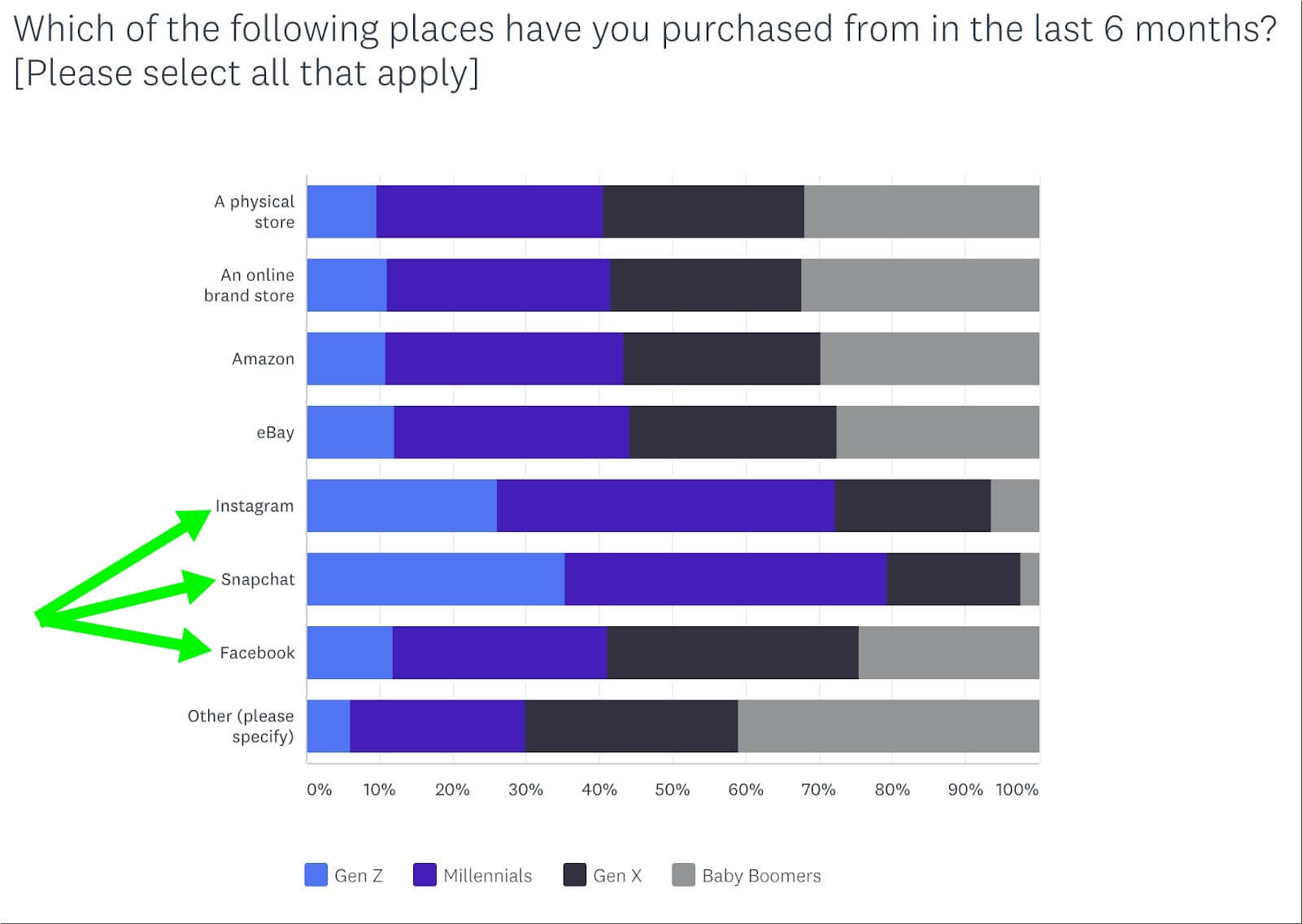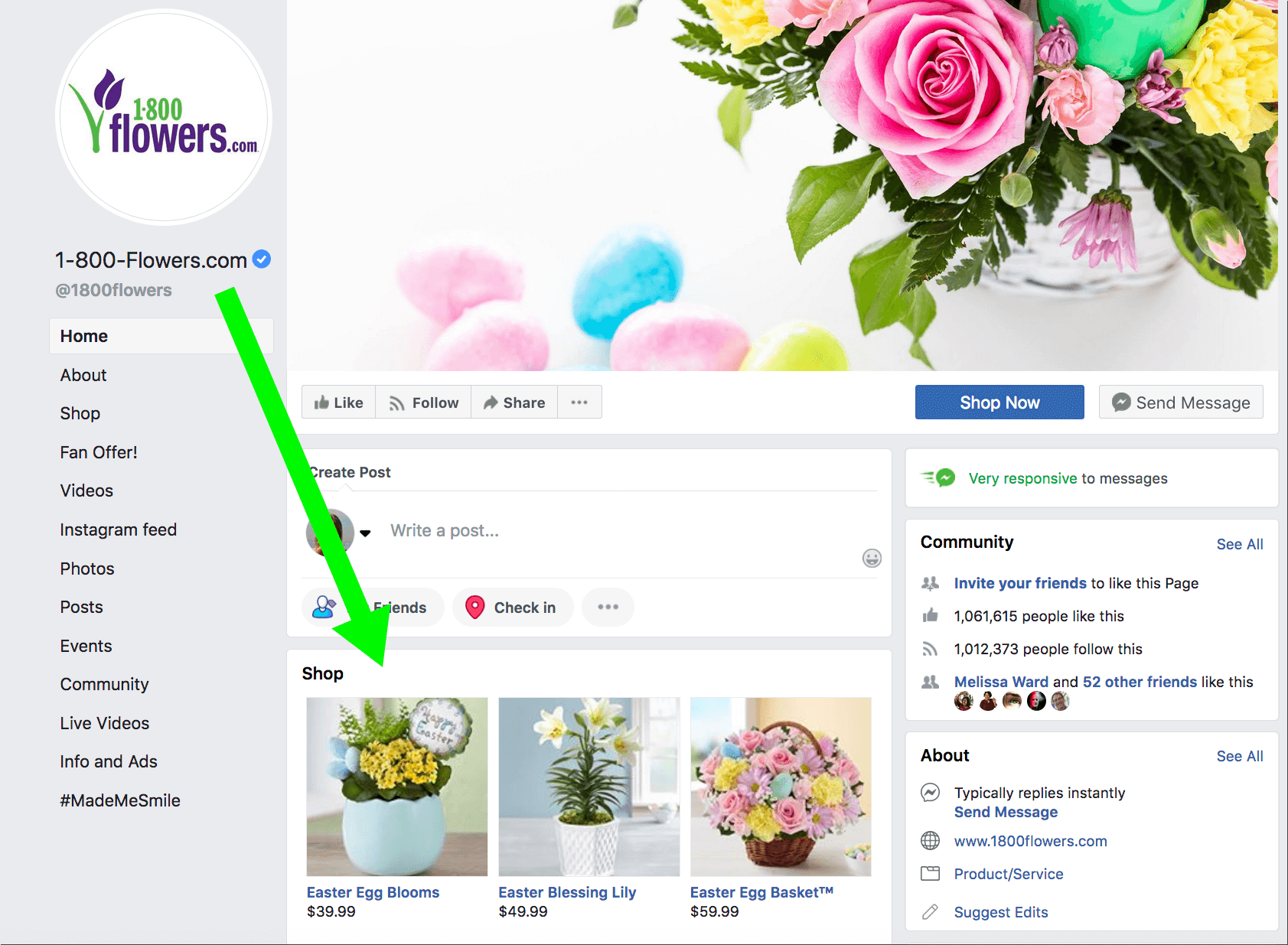Subscription growth hack (by PayKickstart)
Facebook Group - 3,932 members
Visit Group
The point where social media and commerce meet is known as social shopping or social commerce.
Social commerce can increase the efficiency of social media ads for brands and streamline the buying process for customers.
Social commerce (or social shopping) is any way social media platforms (Facebook, Twitter, Pinterest, Instagram, etc.) can bring in sales (directly or indirectly).
This is of course a very generic definition but the term is pretty loose. Both social shopping and social commerce and are high-level, broad terms. Social media networks offer many different capabilities and features that fall under that category.
Each social platform uses their own approach to implement social shopping features that brands can use, and some are more successful than others.
Social media occupies a huge part of the ecommerce marketing space and has helped small businesses to build their brand with minimal resources. It does not only influence how consumers perceive brands and what they want, but many social media platforms now have social shopping experiences built in. Snapchat is leading the innovation with Shoppable AR, Pinterest has introduced Product Pins and Instagram has launched shoppable stories and ads.
Some of these features are only available to business accounts that have been approved, and there is likely still much to look forward to and many opportunities for ecommerce entrepreneurs. Consumers are embracing the start of the social shopping era, mainly because social media is already an integral part of their daily digital journey.
As initial social media users are growing up, social shopping is getting more and more adopted. According to Bigcommerce omni-channel marketing report, both Millennials and Gen Z spend the majority of their shopping dollars on products they find on social media (Instagram and Snapchat). Facebook is not too behind:

Some of the more popular social commerce features are described below.
“Buy now” buttons were one of the first ways to transform social media into sales channels and these remain popular. Facebook announced its first buy button in July 2014.

These days, “Buy buttons” can be found on most of the mainstream social networks, including Twitter, Facebook, Pinterest and Instagram. Buy buttons are easy to use calls-to-action (CTA) on brands’ social media posts or ads. They are typically used to link users to the company’s landing page where they can complete the sale.
Since the initial introduction, Facebook has added “Shop” buttons which produced a 5 to 10% increase in revenue.
Interestingly, Twitter’s “Buy” button project was canceled by the platform. It was much more integrated though. The “Buy” button on Twitter used ti allow advertisers to share their products in promoted posts. If the user had elected to have address details and payment information stored on Twitter, they didn’t even have to leave their feed.
We don’t know why exactly “Buy” button didn’t work there but I suspect the fast-forward world of Twitter is not that shopping-friendly (no one apparently was buying from a tweet).
There are also third-party solutions that can help you convert your social media accounts into buying journeys. Linkpop is one of them
Another great ecommerce feature Facebook is offering is its
The best way to use Facebook’s buying options is to treat your Facebook page as a fan club. Simply uploading your inventory to Facebook in bulk is not very effective.
It is far better to make the experience on Facebook and other social media platforms exclusive, for example:

Social media works best when it is kept natural. Build relationships by promoting causes and sharing jokes. Also encourage fans to share everyday experiences rather than limiting their feedback to only product reviews.
Shoppable stories enable users and brands to tag specific products within “stories”. Although this is relatively new, Snapchat and Instagram both launching their own version of this feature has resulted in it taking off very quickly.
If you follow a brand on one of these network, you will likely have noticed that they suddenly pop up messages that prompt you to “Swipe up to learn more!” Products are typically simply tagged within the content.

With Instagram “sticky” stories (i.e. stories that do not disappear after some time but remain pinned to your Instagram wall), many brands have started using shoppable stories as their inventory collection (which is not a bad idea).
While Facebook is great for building customer loyalty and long-term relationships, Instagram provides the opportunity to spread a message quickly and put it in front of millions in a very short period. This is perfect for brands that want to take advantage of trending topics and real time events.
This feature reduces friction and enables brands to create more seamless experiences for customers, as the shopping experience stays within the social media platform. Customers don’t have to interrupt what they’re doing by opening a new app. This makes the feature very popular and it is reported that more than 40% of brands are trying it out on Instagram.
Although social selling is not that new, being able to buy directly on the platform is.
Businesses gain a huge advantage by shortening the sales funnel, and converting their social media channels to a one-stop shop where customers can enjoy a frictionless journey has a direct impact on profits.
How you integrate social shopping into your ecommerce strategy depends largely on what it is you are selling. This defines everything, from social media platforms you are going to be selling through to the type of social commerce feature that will work for you.
For digital products and SaaS products, your best bet is probably to start with Facebook CTAs (“shop now”, “sign up”, “join”, etc.) and Facebook advertising platform. You can easily monitor Facebook-driven conversions by adding a tracking script inside PayKickstart “Campaigns” tab.

Social selling is fast merging with ecommerce and companies are adapting their ad copy and marketing strategies to cater for users that buy directly on social media. Selling on social also means adjusting your customer support and internal communication strategy. Unified communication is a route you may want to take!
As the gap between sales and social media narrows drastically, it will be interesting to see what e-commerce does to play catch-up.
Ann Smarty is the Brand Manager at Internet Marketing Ninjas, as well as co-founder of Viral Content Bee. Ann has been into Internet Marketing for over a decade, she is the former Editor-in-Chief of Search Engine Journal and contributor to prominent search and social blogs including Small Biz Trends and Mashable. Ann is also the frequent speaker at Pubcon and the host of a weekly Twitter chat #vcbuzz
Read More About Ann Smarty